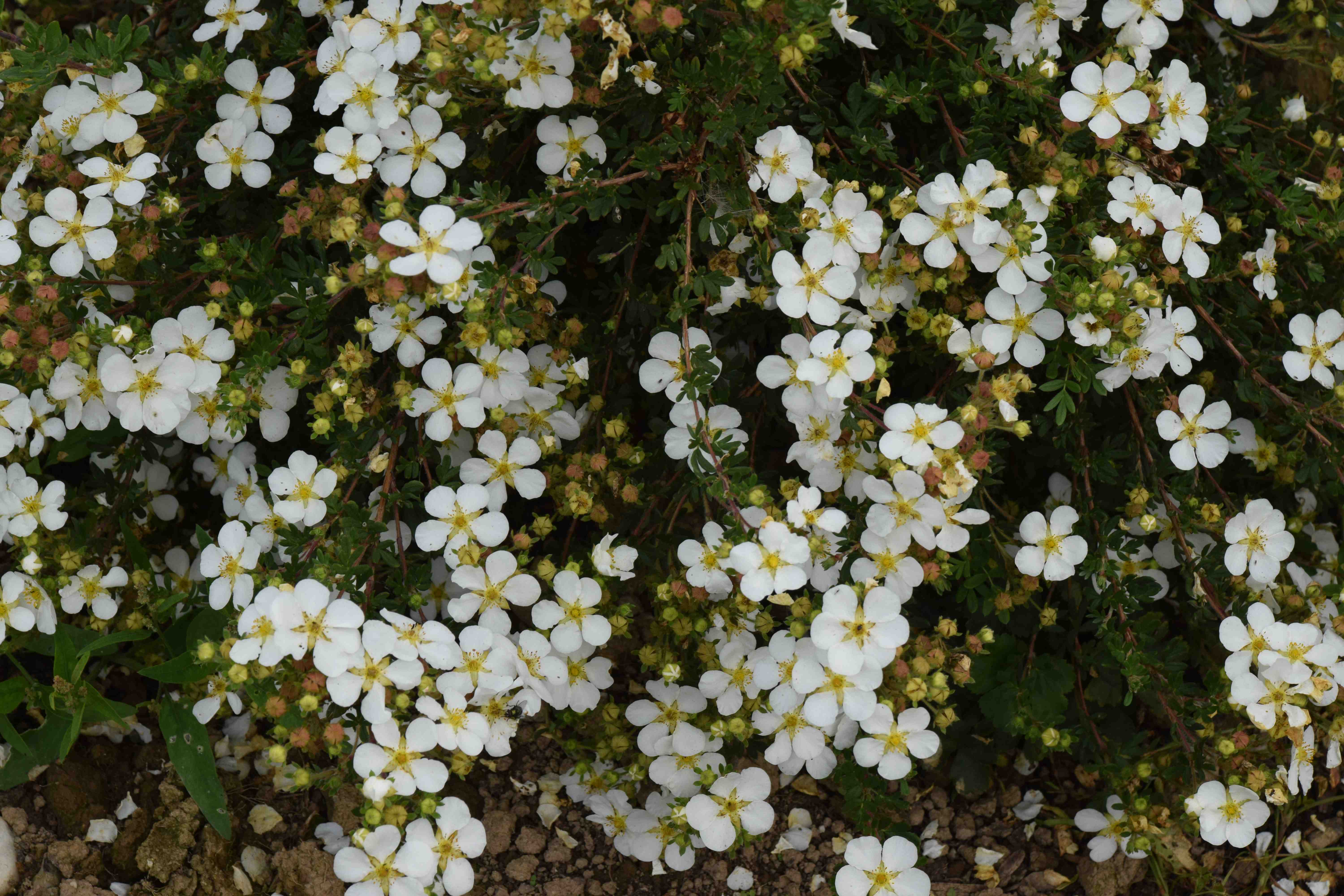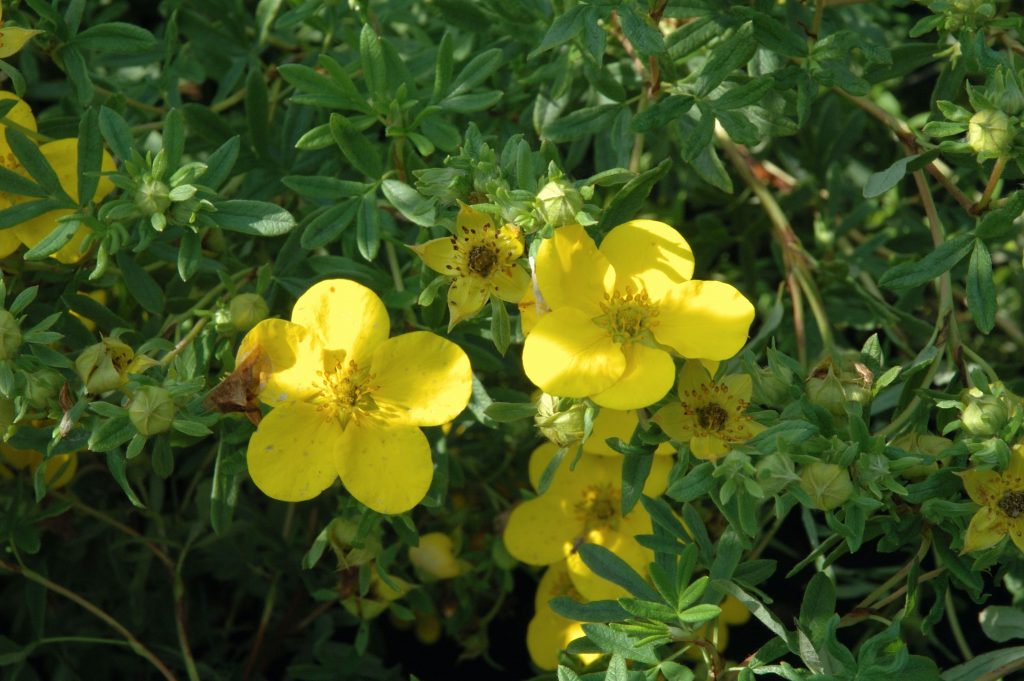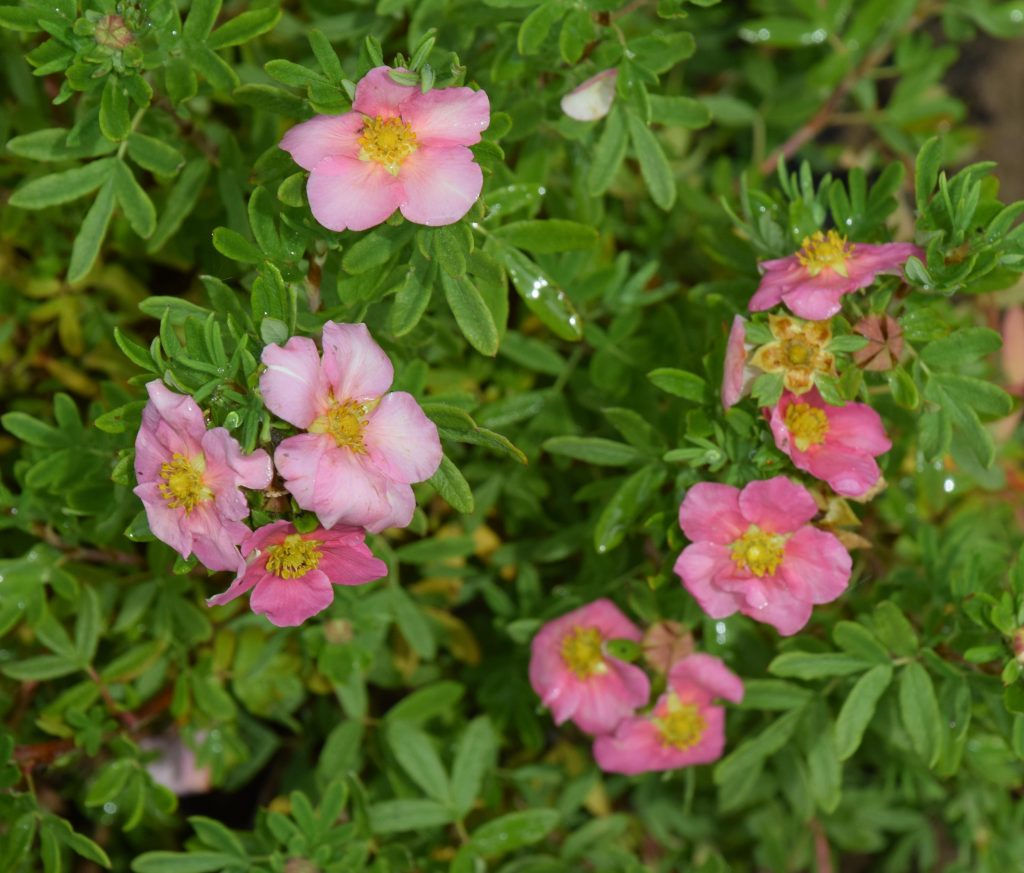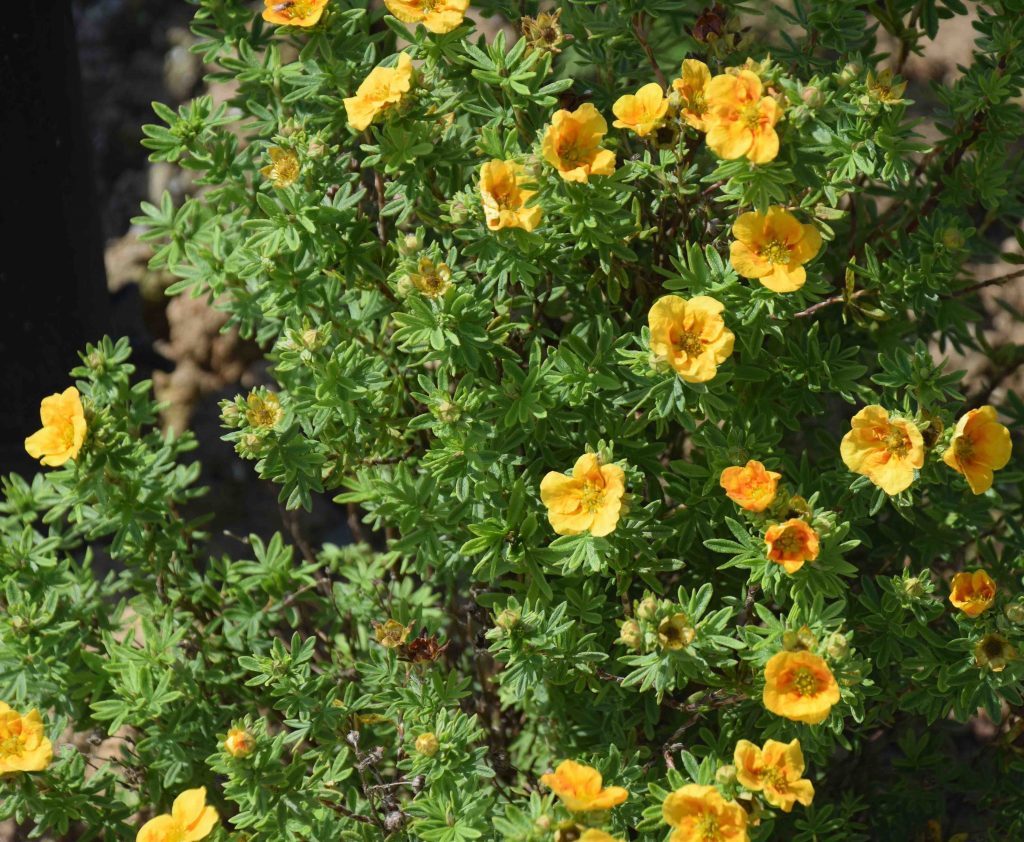
Easy and tough, shrubby potentillas are often overlooked as garden shrubs. Their flowers are small and the brown, twiggy stems add nothing to the winter garden. But these unsung heroes of the garden are true workhorses, reliably plodding along creating a haze of delicate flowers. Plant breeders have worked hard to bring this native shrub into the spotlight and these shrubs deserve our attention.
I have a new garden, being carved out of a field, and the soil is dreadful. Many plants have failed but the shrubby potentillas just grew and flowered. I am so appreciative I have planted more and now have a dozen or so and I like them all. Although they are completely hardy they tolerate drought once established and weather like we have had in the past week won’t bother them at all!
I mentioned that they are not exactly pretty in winter and their flowers and ferny leaves are small, but they generally make neat mounds of growth and can even be used for low hedges.
They are usually known as potentilla but, to differentiate them from herbaceous potentillas they are sometimes called Dasiphora. I don’t think the name will catch on!

Why grow it?
In the wild, potentillas grow around the north Temperate zones, often in very wild, cold and windy habitats. They are hardy and tolerate exposed sites. Their leaves are ferny and greyish or green and the small rose-like flowers are typically shades of yellow and white. But breeders have worked hard to extend the colour range to include pink, orange and red. The first red, ‘Red Ace’, tended to fade in hot sun and the same is true of some of the pinks and tangerines but it barely matters. Some start to flower as early as May and will continue right through to autumn. They are not fussy about soil acidity and will grow in clay or sandy soils, though it always pays to prepare the soil well. The largest get to 1.2m high but the shortest only reach half that. If they get too big you can just chop them off in spring and they bounce back and will bloom the same summer.
In theory the flowers are good for pollinators but I have to say that they are not exactly bee magnets in my garden. That may be because there is too much choice and I have beds of lavender and hyssop that are buzzing with activity!
Where to grow it
Choose a sunny site. They flower best in sun but will tolerate some shade – just expect fewer flowers and a more open habit. Although they will grow in poor soil it is best to treat them fairly and improve poor soils with compost to give them a good start.
Where to start
Although they are starting to slow down for winter, plants still have some flowers to help you choose which to plant. In their pots they can sometimes look a bit straggly but don’t let that put you off – you can give a light trim in spring and by next summer they will look beautiful. The advantage of planting now is that it is easier to keep the young plant watered than in the height of summer, the plant will establish over winter and burst into growth in spring. Small varieties need closer spacing but most can be put 80cm apart. You can grow one in a pot but because they are not very attractive in winter they are, perhaps, not the best choice. If you do, use John Innes No 3 compost.

What to do
Once planted, just keep the plant moist till it is established. A spring feed will be helpful and you can use a rose fertiliser in April. Pruning is not essential but they generally spread and get scruffy after several years. You can then either prune out the weak and crowded stems to leave the stronger, upright stems or you can just shear the whole lot off at about 20cm. Do both in spring. Shearing encourages strong growth and delays flowering a little but is effective and quick!
Who will like this?
Anyone who wants a tough and trouble-free shrub that flowers for six months of the year

Plant them with …
The taller kinds make good short hedges or to edge paths. Their loose, informal habit suits them to any shrub or mixed bed and they make a perfect backdrop to beds of seasonal flowers. They flower so long that they can mix with late tulips in spring, right through to nerines in autumn.
Weekly reminders
Remove greenhouse shading
The intensity of the sun will be decreasing soon, despite the mad weather this week, so it will be time to remove shading from the greenhouse. If you painted on shading paint you need to pick a dry day and just wipe it off. It is also the perfect time to clean the glass too, while the greenhouse is comparatively empty. Sweep up debris on the floor too so you remove all the hiding places for snails, woodlice and vine weevil.
Powdery mildew
Powdery mildew is most common in late summer when leaves remain wet with dew and the soil can be dry. It affects a wide range of plants including roses, phlox, clematis and squashes. It is too late to spray effectively now and it will not do much harm to plants since the leaves will be dying soon anyway. But courgettes affected by mildew should be pulled up because it can seriously weaken them. The same applies to cucumbers and sweet peas that are at the end of their productive lives.
Plant Prepared hyacinths
It may be too early to think about Christmas but if you want to grow your own prepared hyacinths for the Festive season you need to plant prepared hyacinths as soon as possible. They need to be kept somewhere cool and dark for at least ten weeks for the roots to grow and the buds to develop before bringing them into the light and warmth to bloom.
Read more about planting daffodils and other bulbs in two weeks!